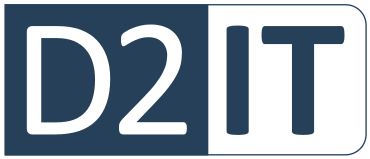 I know how it feels when you hear the buzz about AI tools transforming the legal world. Every headline says “AI is the future of law,” but you can’t help but wonder… Is it safe for my firm?
I know how it feels when you hear the buzz about AI tools transforming the legal world. Every headline says “AI is the future of law,” but you can’t help but wonder… Is it safe for my firm?
That’s a fair question — because for law firms, AI isn’t just a shiny new gadget. It’s a tool that, if used wrong, could expose client data, violate ethical duties, or trigger a nasty call from your cyber-insurance broker.
Let’s unpack how your firm can embrace AI safely — without breaking confidentiality or losing sleep.
Step One: Understand Where the Real Risk Lives
Most data leaks don’t happen because AI is “bad.” They happen because AI tools are connected to the wrong data — or worse, connected to the open internet.
When an attorney or paralegal pastes a client’s details into a free public chatbot, that information might be stored or analyzed by outside servers. Even if the tool promises “anonymity,” it’s rarely designed to meet your ethical obligations under ABA Model Rule 1.6(c).
Here’s the bottom line:
If you wouldn’t email a client’s information to a stranger, don’t paste it into a public AI tool.
Step Two: Use AI That Stays Inside Your Trusted Environment
Good news — you don’t need to ban AI altogether. You just need to bring it inside the walls of your firm’s secure workspace.
Tools like Microsoft 365 Copilot and NetDocuments PatternBuilder are built to work within your existing, compliant systems. That means:
- Client data stays encrypted and private.
- Your firm controls who can access what.
- There’s a full audit trail for accountability.
When configured properly, these AI tools can draft summaries, analyze documents, and even help prepare emails — all without letting sensitive information leak beyond your control.
Step Three: Create a Simple AI Use Policy
Every firm, even a small one, should have a one-page AI Use Policy that spells out:
- Which AI tools are approved (and which aren’t).
- What kind of data can safely be used with AI.
- Who’s responsible for monitoring AI activity.
If that sounds intimidating, don’t worry — it doesn’t have to be legalese. It just needs to make expectations clear and show your insurer (and clients) that your firm takes “reasonable measures” to protect data.
We help firms set up these policies all the time. The goal isn’t to slow you down — it’s to give you peace of mind and proof of compliance.
Step Four: Make AI Work For You, Not Against You
Here’s where the magic happens: when you trust your tech, you can finally start saving time.
Imagine:
- Drafts that write themselves (and still follow your firm’s formatting).
- Case summaries that appear instantly after depositions.
- Routine emails handled automatically — while you focus on billable work.
AI isn’t replacing attorneys; it’s removing the digital clutter that eats up your afternoons.
Step Five: Partner With Someone Who Knows Both Law and Tech
You shouldn’t have to become an IT expert to use AI responsibly. A trusted MSP who specializes in law firm compliance and security can configure your AI tools, set the right permissions, and keep you on the right side of your insurer and the bar association.
When AI, IT, and compliance work together, you don’t just get efficiency — you get confidence.
Final Thought
You don’t have to choose between innovation and integrity.
With the right guardrails, AI can make your firm faster, safer, and more competitive — without risking client trust.
And at the end of the day, that’s what every attorney really wants: to feel in control of their tech, their time, and their reputation.
Want help building a safe AI strategy for your firm?
Let’s make it simple. We’ll review your tools, map the risks, and show you how to get the benefits of AI — with your client confidentiality locked down tight. Set up a discovery call with our team now.

